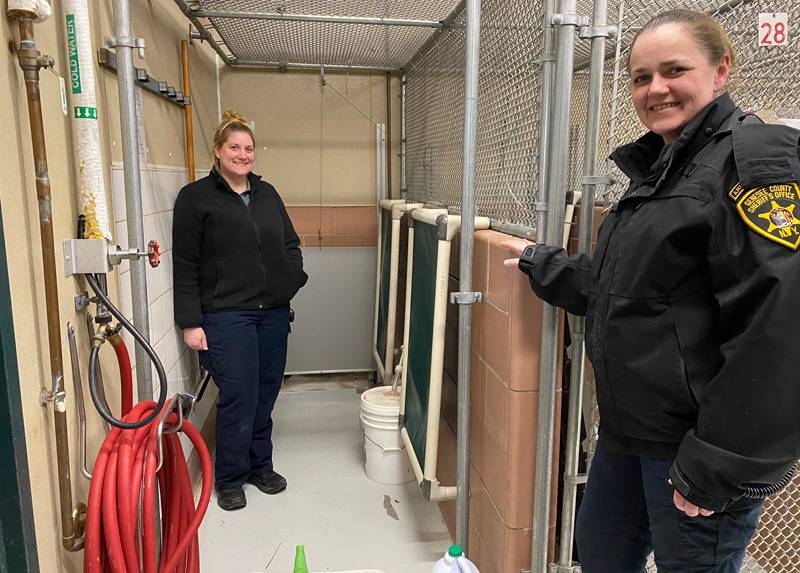
Photo by Joanne Beck
As Genesee County Animal Shelter staff and volunteers prepare for the mandates handed down by New York State for a new companion animal law, there’s no doubt some apprehension in the air.
Dog control officers Sarah Fountain and Catherine Stewart have been at the Route 5 shelter for more than two years each, and though confident in what’s currently being done to care for the animals, they know that modifications to the status quo are coming.
“It’s very overwhelming,” Fountain said Thursday, with two thick packets of the law and guidelines sitting nearby on her desk. “I think change is very scary for people. I think some of this stuff is already being done.”
There are the bigger alterations of the physical building, which sits alongside County Building #2, including a new HVAC system that keeps the air temperature between 60 and 80 degrees, separate ventilation systems for the adoption and stray side of the shelter, larger kennels for both dogs and cats, isolation rooms for sick dogs and cats, treatment rooms for dogs and cats, separate washing facilities for both dogs and cats, additional wash sinks for volunteers, and daylighting for diurnal lighting.
Those are no small fixes, as they will require major spending, to be offset with a grant for up to the maximum amount of $500,000 the county is hoping to receive. There are also the physical implications of doing work alongside caged occupants. County officials are reaching out to adjacent shelters for assistance with temporary housing while much of the upgrades and repairs are being done, Fountain said.
Then there are the boots-on-the-ground changes — those day-to-day items that she and Seward and the daily core eight volunteers for dogs and about 15 for cats must abide by per state Ag & Markets law.
“We have to keep documentation of every little thing, and there’s more training for volunteers and everyone who’s coming into the building,” Seward said. “It’s something we already do, but we have to increase it, keep more detailed records — are they eating, are they drinking, going to the bathroom, the noise levels and temperature levels.”
Other data tracked by animal shelters includes animal handling; behavioral assessment; enrichment and stress reduction; management of bite/scratch cases; and sanitation, plus written protocols approved by a licensed veterinarian, including nutrition and feeding; physical examination; emergency veterinary care; pain management; vaccinations; parasite control; anesthesia and surgery, if performed on-site by the organization; humane euthanasia; and outbreak management/control of infectious diseases.
They both agreed that the animals are well taken care of, and the shelter operation has become one of those “well-oiled machines.” However, there are a few things that could use attention, such as the temperature. While there hasn’t been a problem with maintaining proper heat during winter, it has gotten very hot during summer. They have some air conditioning and fans, but “it does exceed 80 degrees” on those exceptionally blazing 85-degree days, Seward said.
She looks forward to having something more stable in place.
“I think it’s a good thing. We have struggled to keep them — it’s not all the time, but there are times when we struggle to keep the temperatures down, and we’re moving dogs around to get everybody to where we can keep them comfortable,” she said.
“And when it’s warmer than 85 degrees, it’s not ideal for the people or the animals,” Fountain added.
They have shuffled dogs around to different spots in the shelter if a room is particularly sunny and warm and make sure they’re near a fan, they said.
“This past summer, part of it was trying to move them to different spots. We had this room that seemed to be too hot, the way the sun's coming in later in the day, that we have one particular dog room that gets particularly hot. And I think it has to do with the way the sun's coming in," Seward said. "We’ve had to move dogs to the other side to a room that is cooler, we’ll move them over there under more fans over on the other side. And then move them back if we get it cooled off, and move them back before we're open to the public.”
Daily logs will be mandatory for cats as well, tracking how many minutes a day they have interactions with others and what the interaction was.
“I think we’ll all have to be checking. We have a system with the cats right now set up. We’re tracking, feeding, and watering so that they get enrichment time," Fountain said. "We need to get into a routine of doing that tracking. I think we just started with the cats, and now we’re going to move on to the dogs.”
With a smaller core group of volunteers working with the dogs, Seward sees that being a little easier to manage than with more people and more opportunity for variety, interacting with the cats since there’s a settled routine and schedule for the dogs. Seward and Fountain like routine.
“Sarah and I have a routine, we come in and in the morning we’re the ones that feed and let out the dogs, and we clean, sometimes there’s volunteers that help with that. But we come in and we do kind of the basic care for the day, everybody gets fed, everybody goes outside,” Seward said. “Throughout the rest of the day, it’s more spot cleaning, everything gets scrubbed in the morning, and then as the day goes on, we just do it kind of as needed. We have a great group of volunteers that comes in in the afternoon. And they kind of have a schedule for who does what days, but it’s a smaller group.”
For as many guidelines as the state has passed on to them, the officers aren’t certain how all of the tracking will be managed. Will it be done via computer or manually written and available in hard copy form? “They haven’t given us an answer as to how they’re going to monitor that,” Fountain said.
Having all of the information in a computer program would be nice, they said.
Along with the new revisions, we will be replacing all of the cat cages — they’re too small for the new regulations, have slatted bottoms which won’t be allowed, and should be compartmentalized so that sleeping, eating, and litter box areas are properly separated.
The adoption kennels need to be reconfigured so that there are some bigger cages for those larger breeds of dogs that come in. A sink/wash set-up will be built in the dog adoption area, specifically, “readily accessible sinks shall be convenient to all animal care areas. Single service soap and towels or electric hand dryers shall be available at all hand-washing locations.” Space is to be mapped out to provide isolation areas for animals with infectious diseases, so as not to spread those to others.
Sound will be another focal point. Each animal shelter “shall minimize continuous exposure of personnel and animals to sound levels exceeding 85 decibels. Active measures shall be taken and documented to minimize sound levels in housing areas. Such measures may include modified kennel design, relocation of particularly loud animals, or use of visual barriers, sound baffling, and behavioral enrichment protocols.”
Each animal shelter is to use a decibel meter at a minimum of once weekly to measure the level of sound in their kennels during cleaning and resting times. “A record of such measurements and the date such measurements were recorded shall be maintained by each animal shelter.”
The current shelter floor has been peeling and needs to be addressed, which will happen as part of the overall project, Seward said. There are pros and cons to consider, from the additional time it may take to complete the ongoing tracking and related paperwork and how to manage several animals during interior construction to the final outcome, she said.
“We have an issue with the flooring back there that the floors need to be refinished, where our flooring is peeling up and it's not truly disinfectable as is. Okay, so it doesn't make sense to fix the floor without also adjusting the kennel sizes. It doesn't make sense to fix this and then take out a wall, and now you have a place missing the floor sealant or whatever they decided to put on. So we kind of need to think of the bigger picture and make sure everything's done in an appropriate way to fix the issue. Not piecemeal things together,” she said. “We do take a lot of pride in taking good care of our animals. Some of the physical changes need to happen to provide the best care. As least temporarily we’re going to have to adjust, we’re going to have the animals out of here short-term. I think this shelter does so much good, we need to upgrade some things.”
They’ve already had a companion animal consultation and visits from officials to take a look at the building. The grant application has only just been approved by the county Legislature for submission, and Fountain and Seward hope to hear something by this spring.
Meanwhile, the new law will take effect Dec. 15, 2025.
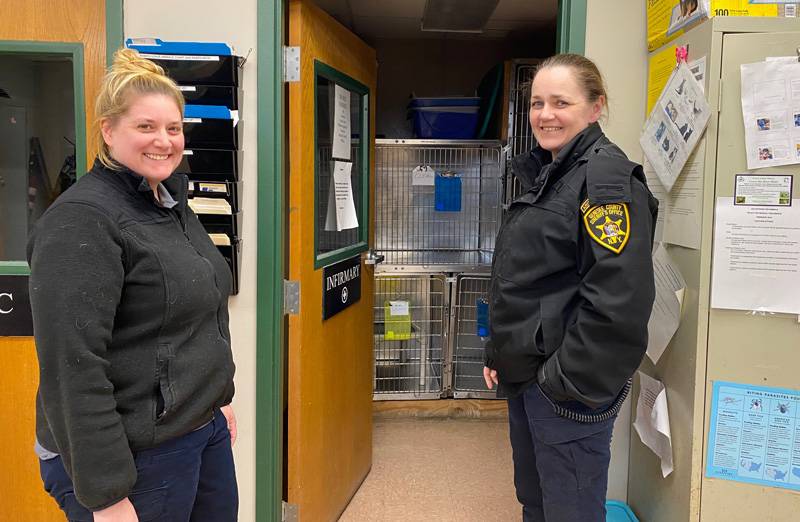
Photo by Joanne Beck
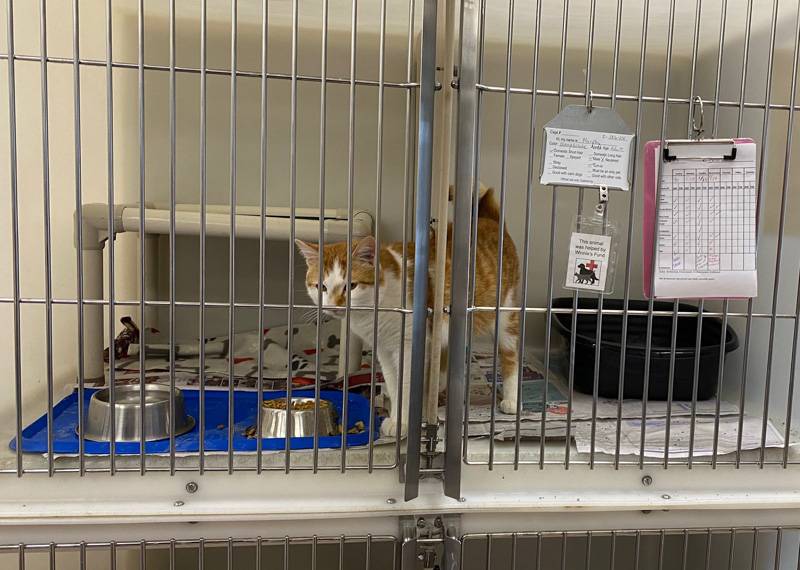
Photo by Joanne Beck
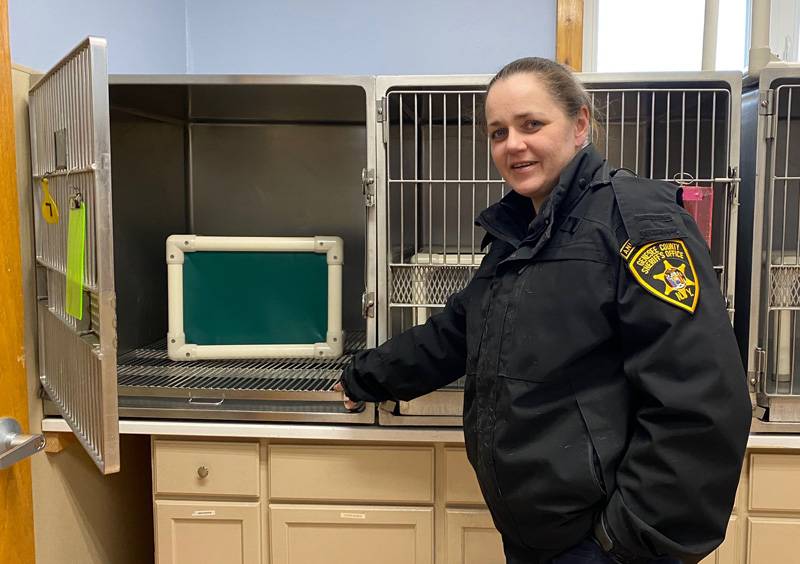
Photo by Joanne Beck
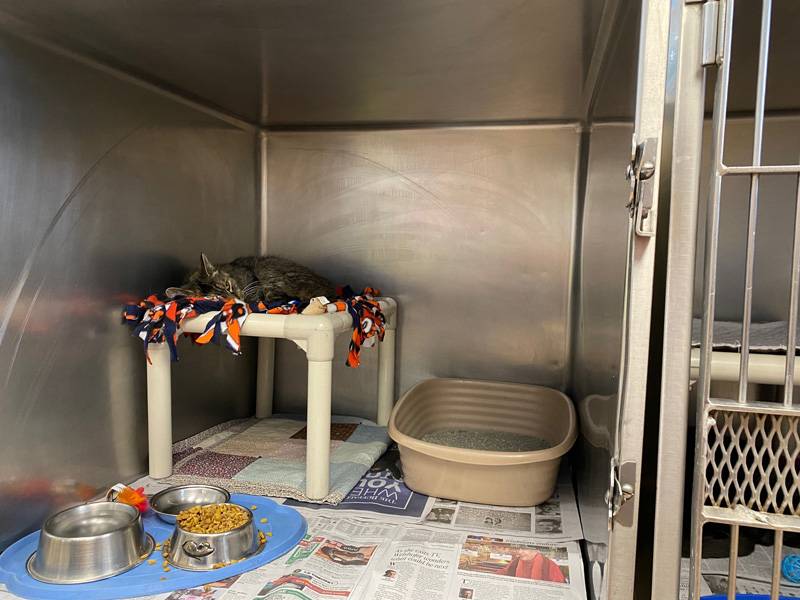
Photo by Joanne Beck
